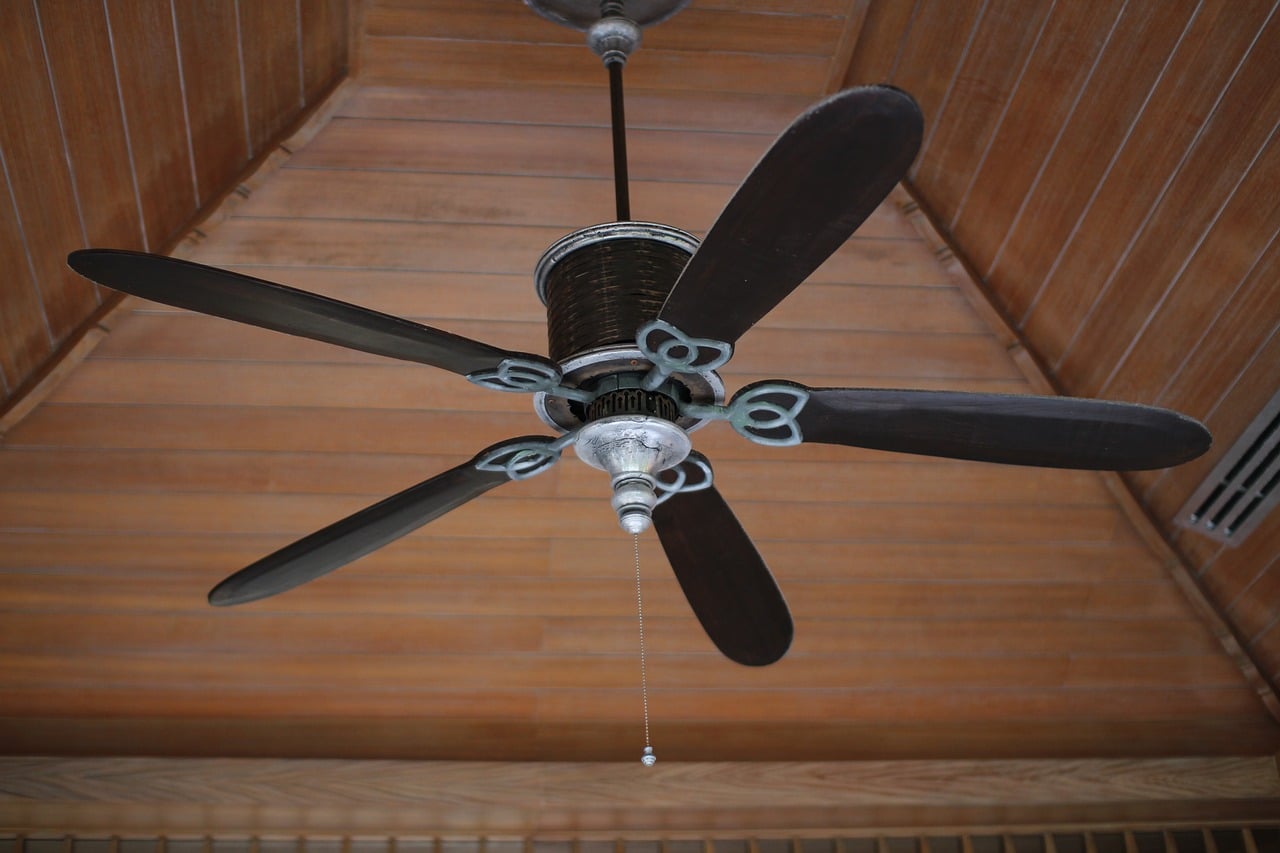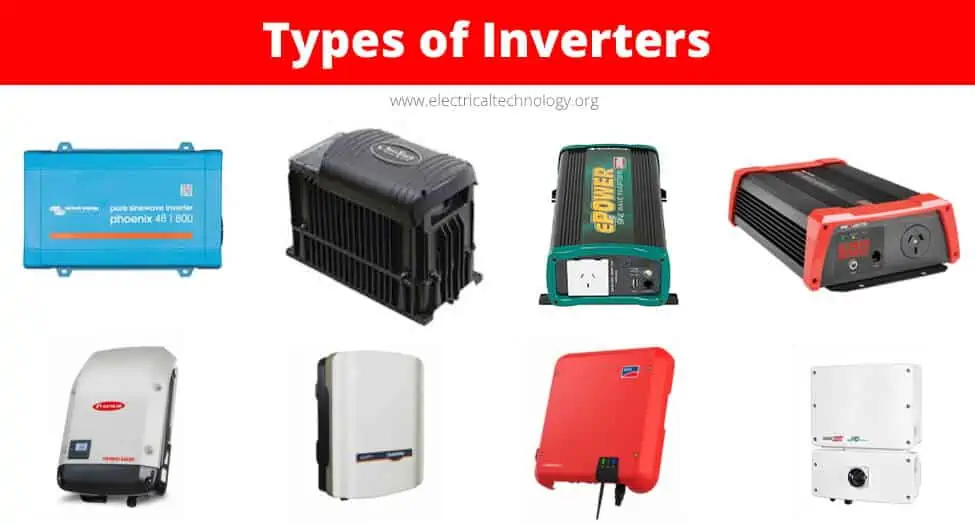Ceiling fans come in several styles, each with its own set of advantages and disadvantages.
Some ceiling fans are better for inside, while others are better for outdoor use.
Ceiling fans offer purpose and elegance to any room, and they may also help you save money on energy bills by circulating air throughout your house.
On the other hand, choosing a ceiling fan is not as straightforward as picking the nicest one from a catalog. Few factors have to be considered when selecting the ideal ceiling fan.
This article will help you understand the differences and features between the different types of ceiling fans so you can make an informed decision when it comes time to buy one.
1. Standard ceiling fan
As you might expect from the name, standard ceiling fans are among the different types of popular ceiling fans.
A built-in light, a five-blade design, and installation on a down-rod are all characteristics of a standard ceiling fan. The flexibility of the standard ceiling fan is the primary reason for its popularity.
Regardless of the color, finish, or material you want for your fan, you’ll be able to discover one that meets your needs without difficulty.
The lights and shades that accompany the gadget can be readily adjusted to your needs.
It’s worth investing in an aftermarket light kit to add your unique touch if you’re searching for something genuinely original.
2. Energy star ceiling fans
An Energy Star ceiling fan may be the one for you if you want to get your environmental badge.
Only ceiling fans that fulfill the US Environmental Protection Agency’s stringent energy efficiency, quality, and performance are eligible for the “Energy Star” status.
Before earning their stripes, they must also have undergone rigorous testing by authorized labs and gained independent, third-party verification.
You won’t only have Greenpeace’s approval if you have these types of ceiling fans. If you get one of these ceiling fans, you’ll save a lot of money on electricity compared to a traditional fan.
Ceiling fan/light combinations that are Energy Star certified are on average 40% more energy-efficient than conventional fan/light units.
According to Energy Star, they offer superior functionality thanks to improved motor and blade designs. They also provide the latest in-efficient technology and state-of-the-art design.
So, if you want to reduce greenhouse gas emissions while also lowering your electricity bills, it’s pretty obvious which type of ceiling fan to search for.
3. Agricultural ceiling fans
Proper ventilation in agricultural spaces is critical because it keeps air flowing and maintains a comfortable temperature for both workers and animals.
It also helps reduce farmyard odors, create the ideal environment for plant growth, reduce mold and mildew formation, and aid in drying animal bedding, litter, and floors.
Agricultural ceiling fans are one of the different ceiling fans specifically built to resist moist or wet conditions that may rapidly become an issue in such places.
Also, their size and construction make them more than capable of ventilation in vast open rooms with ceiling heights of 15 feet or more.
4. Commercial ceiling fans
A commercial ceiling fan should be your first choice to increase air circulation in a school, restaurant, retail store, or workplace.
Commercial fans, which are meant for areas with a ceiling height of 10 to 25 feet, are designed to produce the ideal ambient temperature through their dual purpose.
Commercial fans may be set to blow in the forward-facing direction in the summer to provide an optimum airflow that reduces the effective temperature by around 8 degrees Fahrenheit.
This will help you to maintain things bearable without raising energy expenses if your area isn’t air-conditioned.
Commercial fans can also be turned around to face the other way in the winter, creating an updraft that forces warm air down from the ceiling into the utilized space below.
Commercial fans, like industrial fans, come in various designs, from rustic to contemporary, allowing you to choose the ideal match for your decor.
5. Damp or wet ceiling fans
Damp or wet ceiling fans are attractive because they can withstand damp, wet, or humid environments.
Damp or wet ceiling fans made of unique, water-resistant materials and robust, all-weather blades are an excellent choice for bringing much-needed airflow to rooms.
Especially rooms that are subjected to changing or adverse conditions.
When picking the most appropriate device for your needs, there are a few significant distinctions between wet and damp fans to keep in mind.
Wet fans, to put it simply, are waterproof and can tolerate direct contact with water. On the other hand, Damp Ceiling fans can endure wetness and mild humidity but not heavy rain.
You can get away with a wet ceiling fan if the place you’re housing the fan is covered by a roof (a porch, solarium, or covered deck, for example).
If the space is exposed on all sides (for example, an open pergola), a more substantial duty wet ceiling fan should be considered instead.
A wet ceiling fan is often composed of naturally water-resistant materials like palm leaves or bamboo.
These materials will continue to operate smoothly even when exposed to high humidity, direct heavy rain, or even snow.
In terms of design, damp and wet ceiling fans come in various styles, colors, and finishes, allowing you to personalize the device to precisely complement your outdoor decor.
6. Low profile ceiling fans
A low-profile ceiling fan is also known as hugger ceiling fans or flush-installed ceiling fans.
It is connected directly to the mounting brackets, putting it flat against the ceiling, unlike a regular fan, which utilizes a down-rod as part of its installation.
These are among the different types of ceiling fans that are a fantastic choice if your room is less than 8 feet tall (or you’re just unusually tall) since the blades will still rest at the ideal height of 7 feet above the floor.
One of the disadvantages of the low profile ceiling fan is that its near closeness to the ceiling prevents it from providing the same degree of airflow as other alternatives (such as the standard), limiting its cooling capabilities.
On the bright side, it will relieve some of the pressure on your HVAC system.
Low-profile ceiling fans, like regular fans, come in various materials, finishes, and colors and maybe readily modified to fit your tastes.
In terms of popularity, their compact form, attractive look, and suitability for tiny areas make them virtually a match for the typical ceiling fan.
7. Dual motor ceiling fans
Ceiling fans with two motors; dual motor ceiling fans are precisely what they sound like.
A central motor housing is connected to two horizontal rods in this type of fan. Each rod has a fan head that can be adjusted.
These fans are more attractive than typical single-motor ceiling fans since they allow you to adjust each one to its speed.
Considering its capacity to circulate air in a particular direction while still covering a larger area, these unique fans are often utilized in public situations.
If you wish to use your dual motor ceiling fan outside, double-check the manufacturer’s specs to ensure it can also function as a damp or wet fan.
8. Remote-controlled ceiling fans
Many fans come with remote controllers, whether regular ceiling fans, dual-motor fans, damp outdoor fans, or other types of fans.
These are an excellent option for anyone with mobility difficulties or who isn’t tall enough to reach the pull cords on their ceiling fan.
This type of ceiling fan is also ideal for high ceilings homes and big event halls, auditoriums, restaurants, and other commercial establishments.
The functions of the remote control vary by model, but they all generally enable you to modify the blade speed and direction and switch the light on and off.
Some fans with remote controls have a range of up to 40 or 50 feet. If you’re concerned about losing your remote control, you can always use a wall switch as a backup.
9. Outdoor ceiling fan
Outdoor ceiling fans come in different types, from a traditional style to a more contemporary one, or a mix of both.
Consider if you want a schoolhouse, a globe, or a branched light kit when purchasing an outdoor ceiling fan with lights.
Whatever your selection, be sure it has an LED light. This way, you’ll not only save money, but you’ll also save the environment.
It may become intolerable if you don’t have enough air in your outside space during the scorching summer heat. This is why having an outdoor ceiling fan installed is so important.
An outdoor ceiling fan may also be used to decorate your outside space, such as your deck, patio, or porch.
These ceiling fans come with a variety of extra features, such as lighting.
10. Industrial ceiling fans
Industrial ceiling fans are one of the different types of ceiling fans built to withstand the harsh conditions of an industrial setting.
These fans are meant to create a large quantity of airflow in large, open areas. Airflow difficulties are different in big, open places like a warehouse or a factory than in a large residence.
As a result, industrial ceiling fans are required in factories, warehouses, and other large buildings since they offer efficient circulation at a cheap cost.
Industrial fans are not only functional but also attractive. They provide excellent coverage and airflow.
These incredible ceiling fans are available in a broad range of colors, designs, and finishes. There are just as many options for industrial ceiling fans as there are for residential ceiling fans.
The classic patterns that these heavy fans come in will captivate you. Each one has been created with cutting-edge technology.
So what do you think? Why not take a bold step to improve the airflow in your space?









